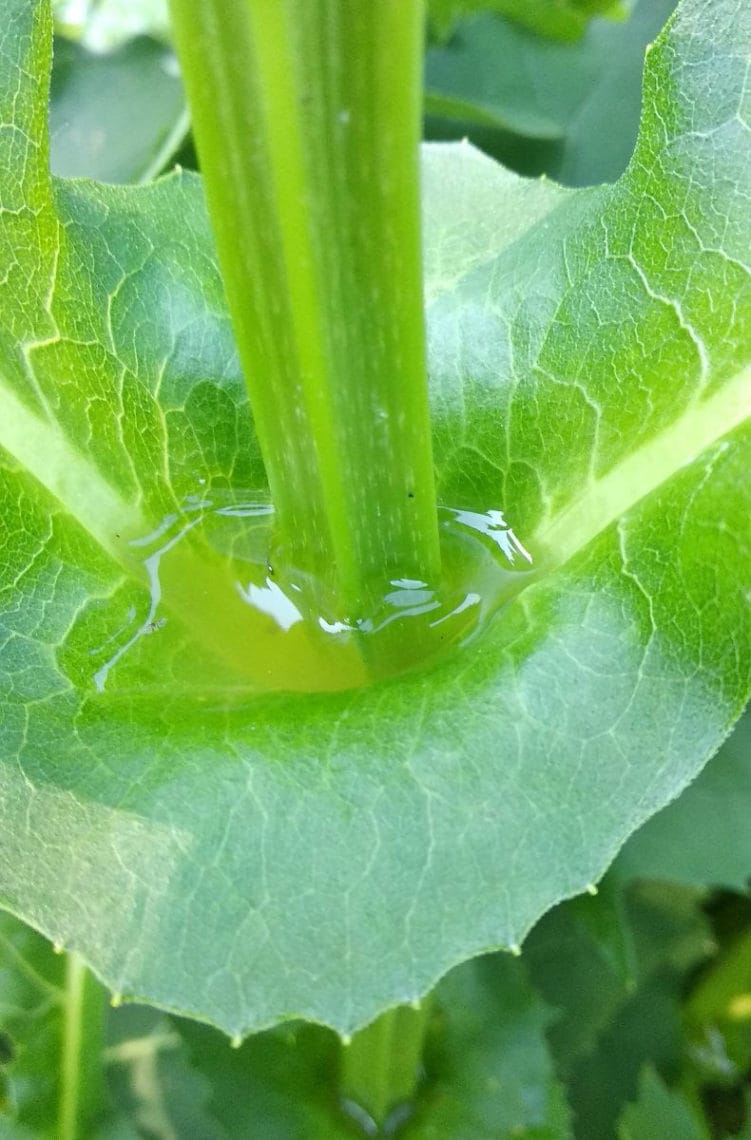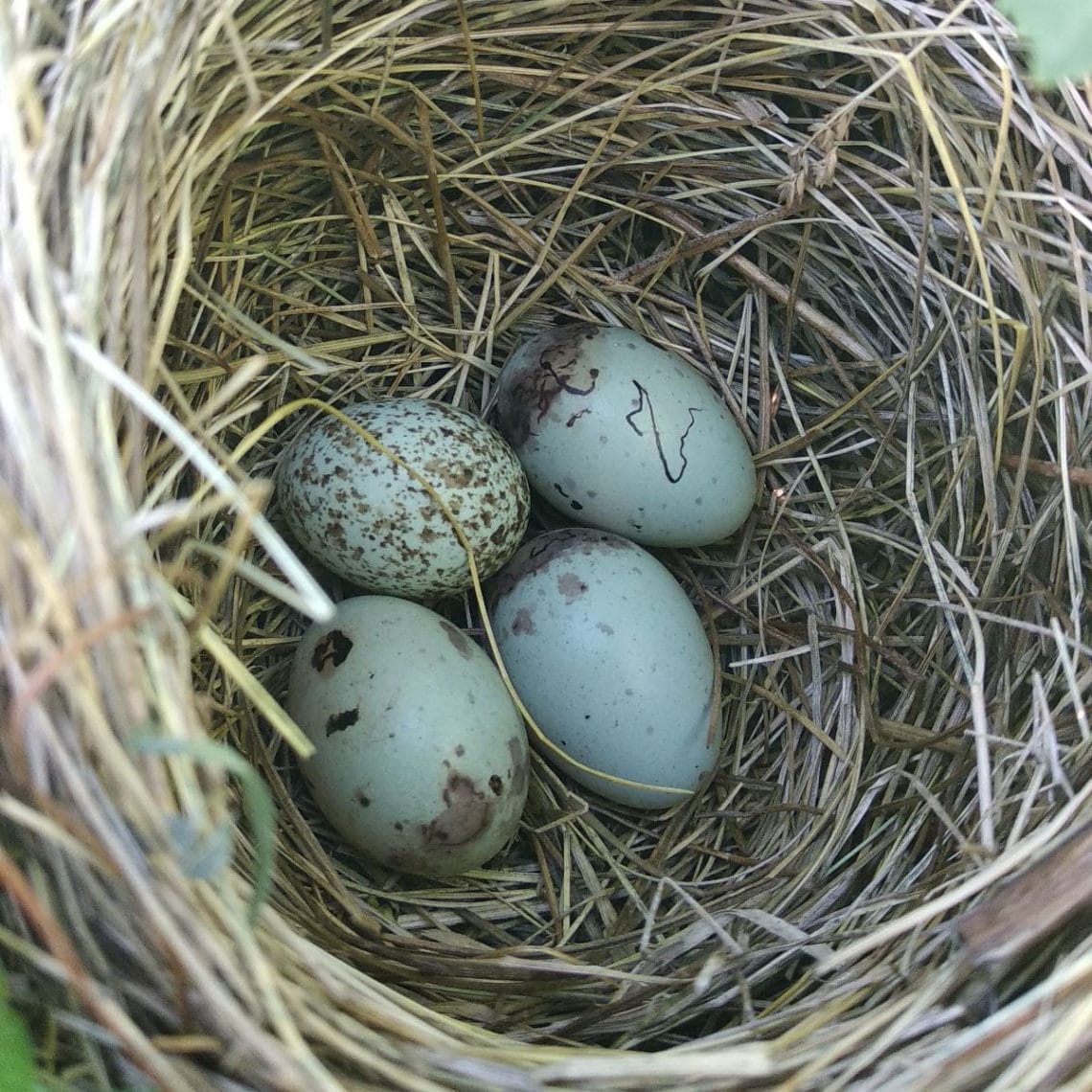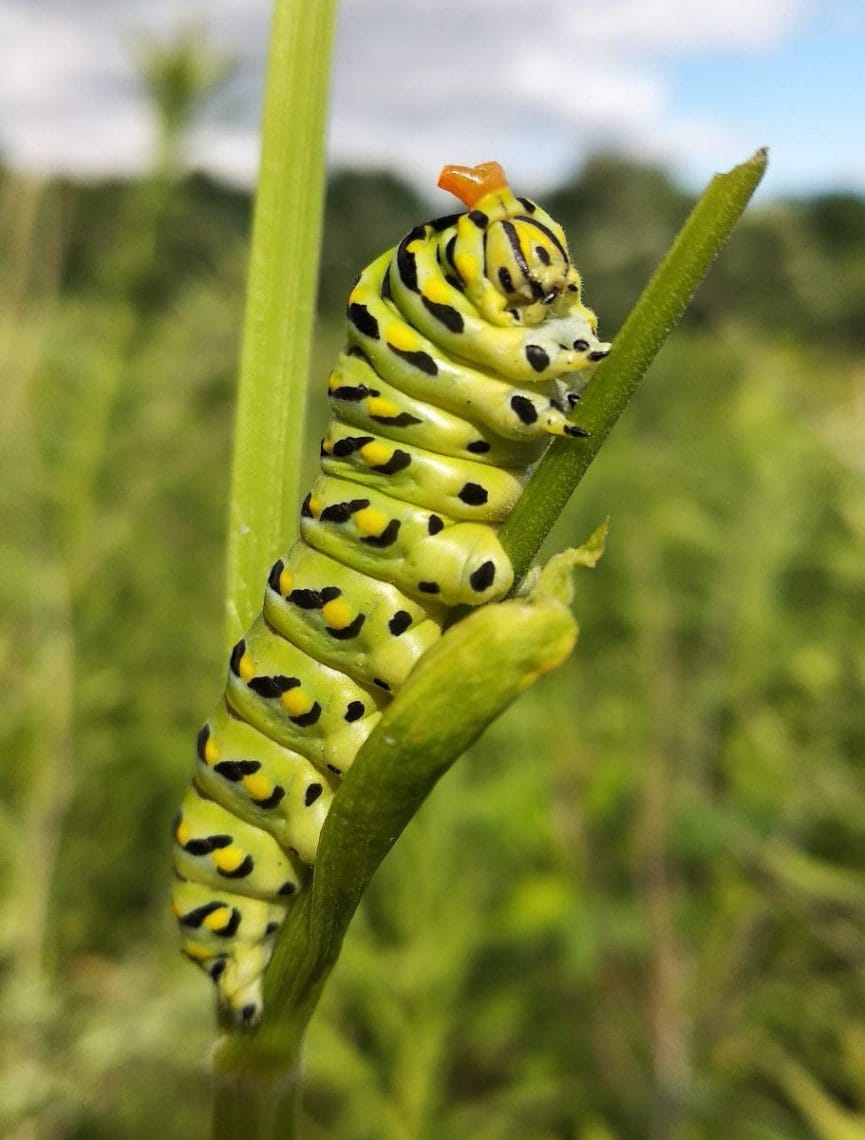I’m hesitant to say it, but it looks like we might finally be on the other side of the intense dry spell that we’ve been having! Every evening I take a stroll through my neighborhood with my black lab named Tucker, and seeing all of the brown lawns is yet another reminder of how hot it’s been. Even those who regularly get the sprinkler going in their yard are still having trouble maintaining green grass.
However, if you were to head out to a natural space you would probably notice that nature continues to thrive despite these conditions. I know that I wouldn’t last a day in that heat without water, but somehow nature makes it looks easy. Let’s take a quick virtual tour of the outdoors and see what else nature has been up to, while we’ve been hiding from the heat.
The plant shown in the photo above is called cup plant, and it’s easy to see why. Where the leaves meet the central stem, a water-holding cup is formed. Each cup plant has several cups along the length of the stem, and these cups can serve as a nice place for critters to take a much needed drink. It’s not uncommon to see birds like the American goldfinch stopping by to take a sip.
If you take a good look at the nest photo above, you might notice that one of the eggs is a little smaller than the other three. It also has more brown speckles. The reason it’s different is because it belongs to different bird species.
While out with the Prairie Partners intern crew at Patrick Marsh this week, we found this red-winged blackbird nest constructed within a cluster of wild parsnip (which was the plant species we were removing at the time). We noticed that one of the eggs was different, which usually means that a brown-headed cowbird was involved. Brown-headed cowbirds are known for not building their own nests. In fact, they can’t build nests at all. Instead, they put a lot more energy into laying their eggs in other birds’ nests. According to the Cornell Lab of Ornithology, they can sometimes lay more than three dozen eggs in a summer!
Brown-headed cowbird chicks are then raised by a foster parent (unless the parent identifies the egg as not their own and removes it from the nest). I encourage you to watch this video on ‘brood parasitism‘ to learn more. *Warning* nature can be… well… nature! As a reminder, cowbirds are protected in the United States and it’s illegal to remove their eggs from other birds nests (as tempting as it may be for some).
|
|



